A Suicidal Stand at the Battle of the Bulge? U.S. Infantry vs. German Panzers
June 15th, 2023
11 minute read
Since the first tanks clanked and clattered their way onto the battlefield in 1916, the infantryman has been forced to fight them, often with little training how to do so, and without weapons truly powerful enough to do the job. Since those frightful early encounters with tanks, infantry anti-tank weapons have been in constant development. One of the most famous of these is the American “Bazooka”, the first man-portable anti-tank rocket launcher, its unique nickname becoming synonymous with hand-held firepower.
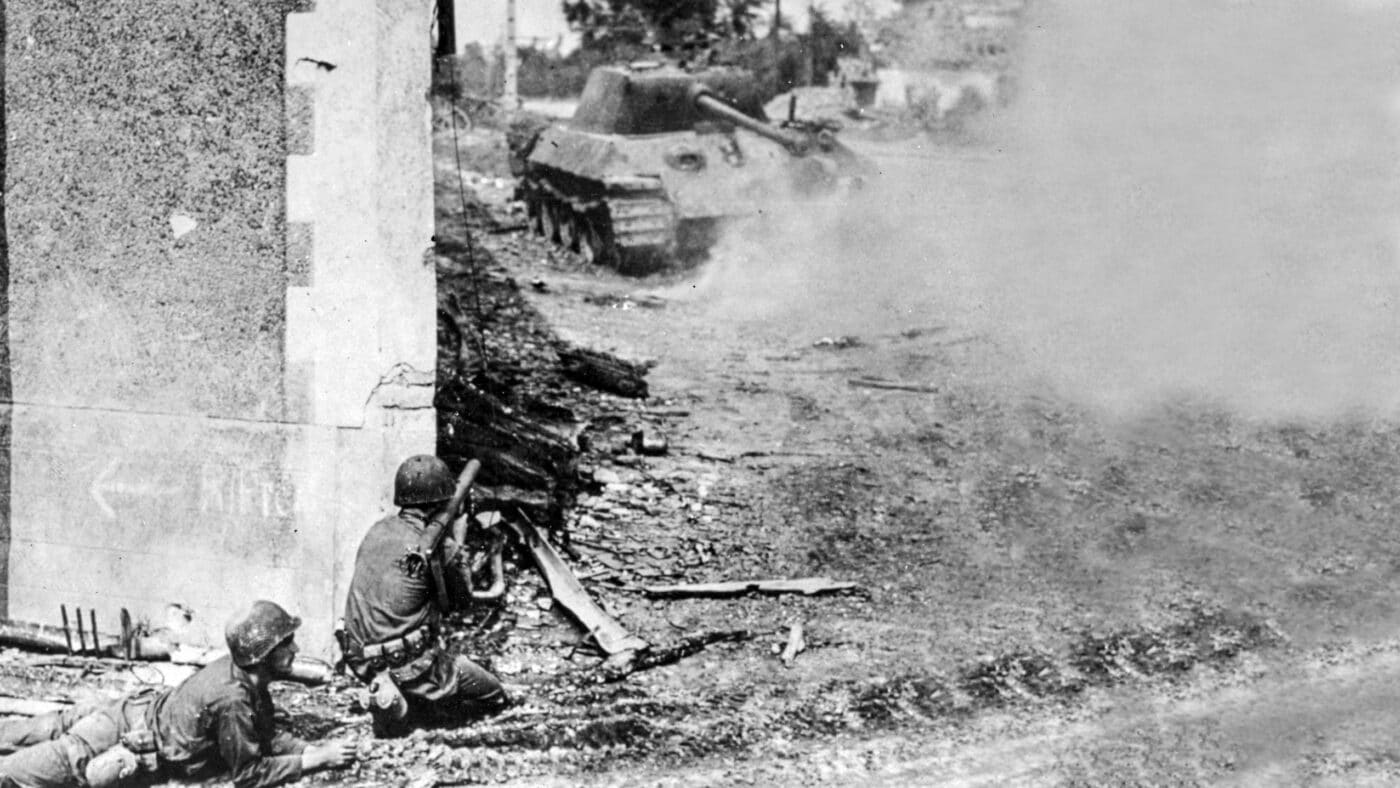
Even though the Bazooka represented a significant breakthrough in infantry anti-tank weapons, its effectiveness was still dependent on the courage and skill of the men using it. During the critical, desperate fighting of the Battle of the Bulge (December 1944-January 1945), U.S. troops fought off the best of Hitler’s panzers, often with a Bazooka, some hope and a prayer — and sometimes not even the Bazooka.
From the Trenches
German troops in World War I were the first to face tanks, and consequently the Kaiser’s infantrymen were the first to develop anti-tank doctrine.
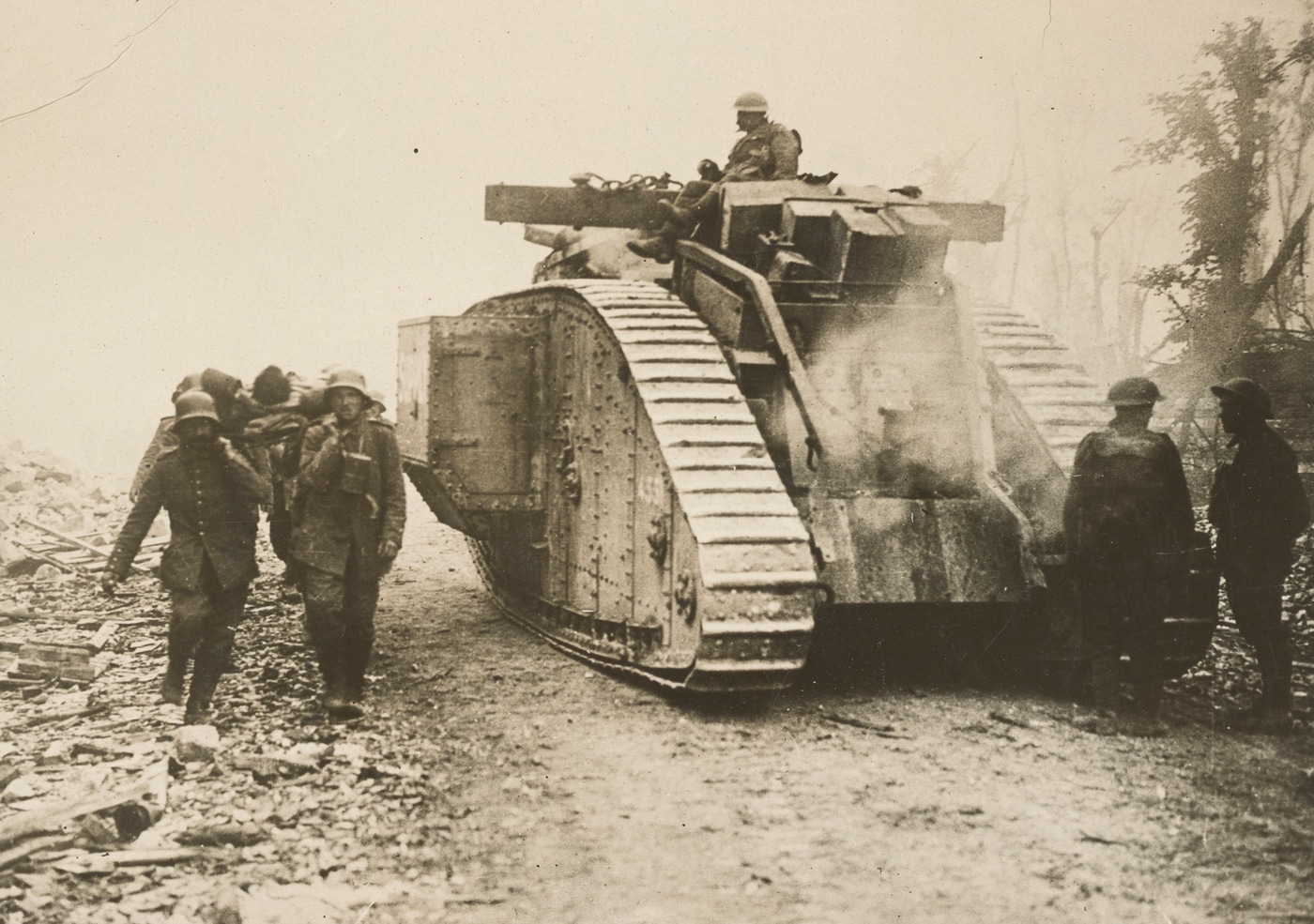
A report issued from the German High Command during the summer of 1918 describes the harsh realities of anti-tank defense, and the high expectations placed on the infantry to hold their positions during a tank attack:
Experience has shown that the infantry on its own initiative, with the means it has at hand (rifle, machine gun, anti-tank rifle, several hand grenades tied together, light minenwerfer with flat trajectory), is amply able to bring tank attacks to a standstill and break them up. Whenever the infantry has kept its nerve, allowing the tanks to come with 80 or 100 meters, and then has released a well-directed fire, one tank after another has been destroyed with the general help of all the weapons in the hands of the infantry.
By the end of 1944, the anti-tank weapons in the hands of the infantry had certainly improved, but the validity of the 1918 report remained true, regardless of who was attacking or defending.
The Official Story
As with any new weapon, troops made some wild assumptions about the Bazooka. To many, it looked like something out of Buck Rodgers, but it was just a simple rocket launcher that leveraged the power of the “hollow-charge” explosive principle. The hollow charge does not rely on high muzzle velocity and solid shot to penetrate armor plate. Rather, the special shape of the explosive detonates against the target and creates an instantaneous flame jet of tremendous intensity that burns through the armor to detonate the ammunition and fuel contained within the vehicle, bunker or building.
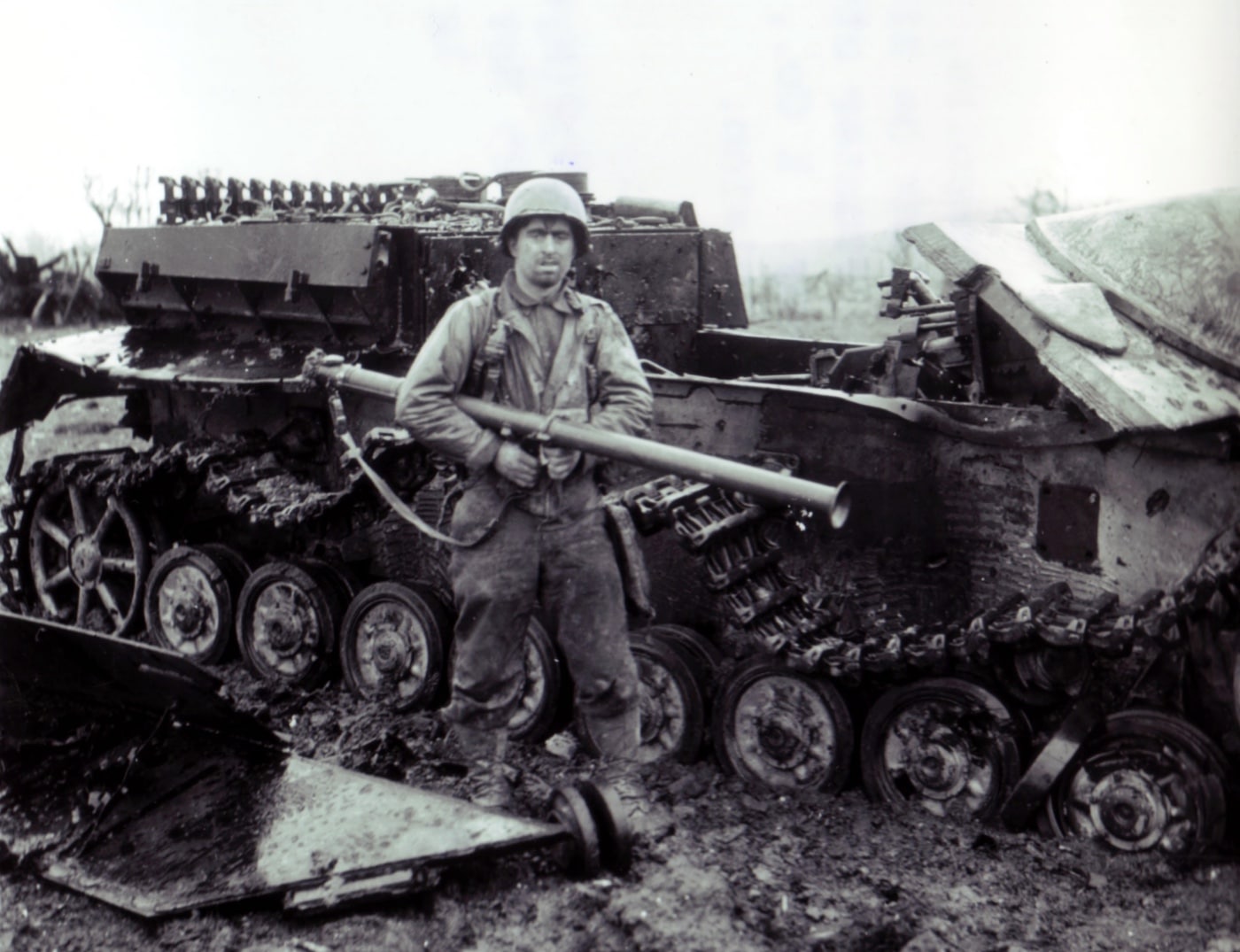
The following description of Bazooka rocket performance comes from Antitank Weapons, produced in July 1944, by the Office of the Chief of Ordnance:
The 2.36inch rocket launchers M1A1 and M9A1 (“Bazookas”) are shoulder weapons designed especially for antitank purposes. They are powerful supporting arms which may be used both offensively and defensively. Field reports state that the Bazooka has been very effective against tanks and other armored vehicles. The latest model, M9A1, is a two piece launcher which may be carried by paratroopers or airborne infantry. The muzzle velocity of these weapons is 265 feet per second.
At all ranges the M6A1 and M6A2 will penetrate 3 inches of armor plate at angles of impact as great as 30 degrees from the normal. The M6A3 will penetrate, at all ranges, 4 inches of armor plate at all angles of impact as great as 50 degrees from the normal.
A hole approximately one inch in diameter is blown through the armor plate and particles of the projectile and the armor plate, heated to incandescence, are blown from the inside of the plate in a cone of roughly 90 degrees. Any ammunition within this cone is usually exploded.
Antitank Weapons (July 1944)
Men Against Tanks
As German tanks advanced into the Ardennes in Hitler’s last great attack in December 1944, this became the backdrop for what would be the Bazooka’s greatest battle and one of American infantry’s finest hours.
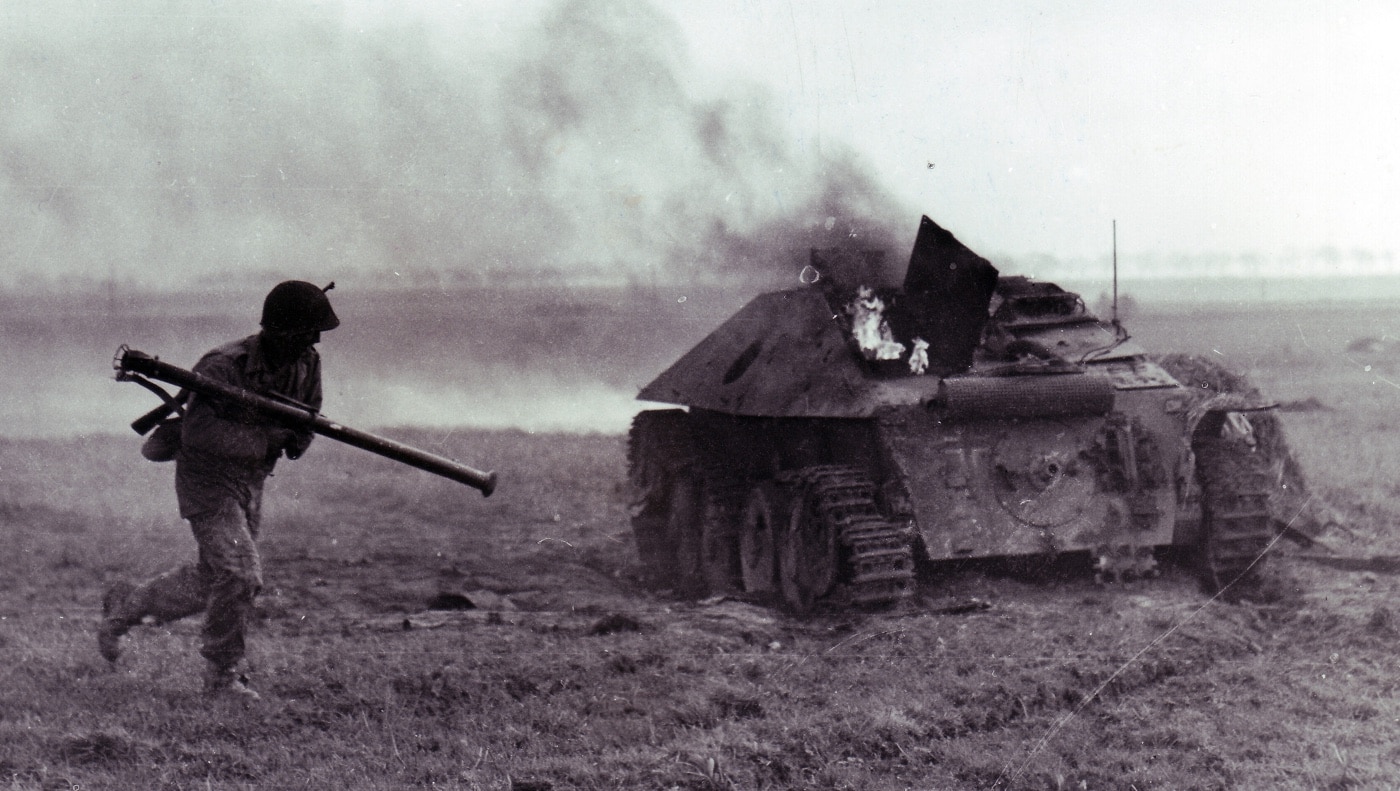
John C. McManus is one of America’s leading historians, and he spent countless hours interviewing G.I. veterans for his series of books, including this passage on the defense of the Losheimergraben crossroads by the men of the US 394th Infantry Regiment against elements of the 1st SS Panzer Corps.
To the south, a destroyed bridge at Losheim kept some of those vehicles waiting in place for many hours. Others made it to Losheimergraben, only to become embroiled in close-quarters fighting with the Americans. Antitank guns were not as big of a problem for them as bazookas. These handheld tubes were the great equalizer in any tank-versus-man confrontation. Even though most infantrymen were trained to fire this weapon, the majority did not possess the kind of courage it took to wield one, in real combat, against an imposing tank. That hardly mattered, though. The bazooka only required a two-man crew. This meant that, under the right circumstances, a mere handful of stalwart souls, brandishing a few tubes, operating from some semblance of cover, could make life very difficult for enemy tanks.
The good news for the beleaguered infantrymen at the Losheimgraben crossroads was that they had an abundance of Bazookas — and the bad news was even though they were marginally effective against German heavy tanks, the exceptionally cold weather played havoc with early variant of the Bazooka’s weak batteries, and the sensitive nature of the rockets.
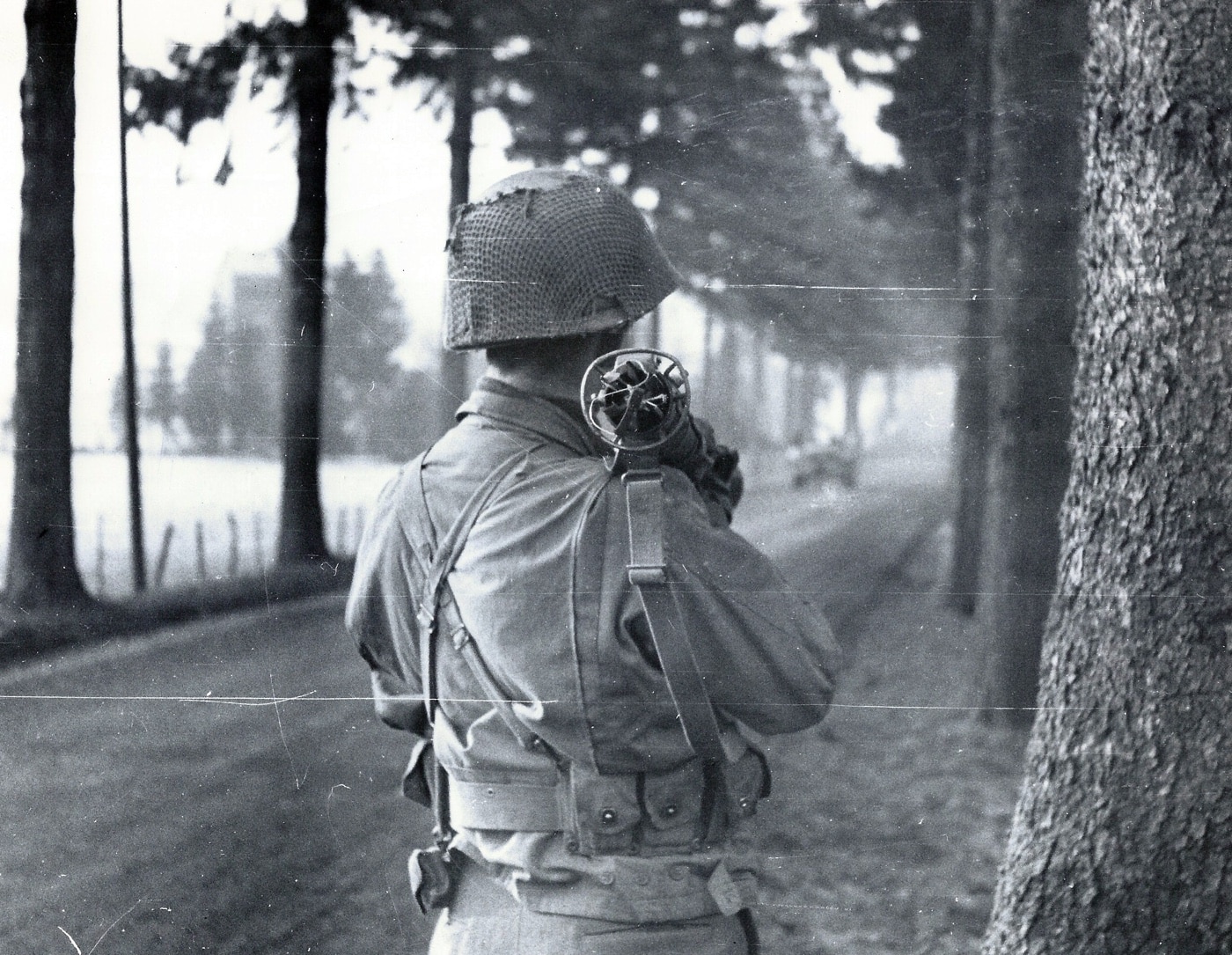
The manual for the M1 and M1A1 launchers warns:
At temperatures below 14 degrees F, the dry cells become too weak to fire this weapon. When used at low temperatures the batteries should be removed from the launcher and kept warm until just before firing. Carrying the batteries in inner pockets in cold climates will keep them sufficiently warm. Spare batteries can be carried in the pockets and switched with cold ones every half hour. The rockets should not be fired at temperatures below zero F, nor above 120 F.
The situation was as frustrating as it was dangerous. Rockets failed to launch in the cold, some batteries went dead at the absolute worst time, and sometimes the rocket propellant became unstable and would not fire. Other rockets launched but failed to explode when they struck the target, while others exploded in nothing but a harmless puff without creating a penetrating flame jet against the armor.
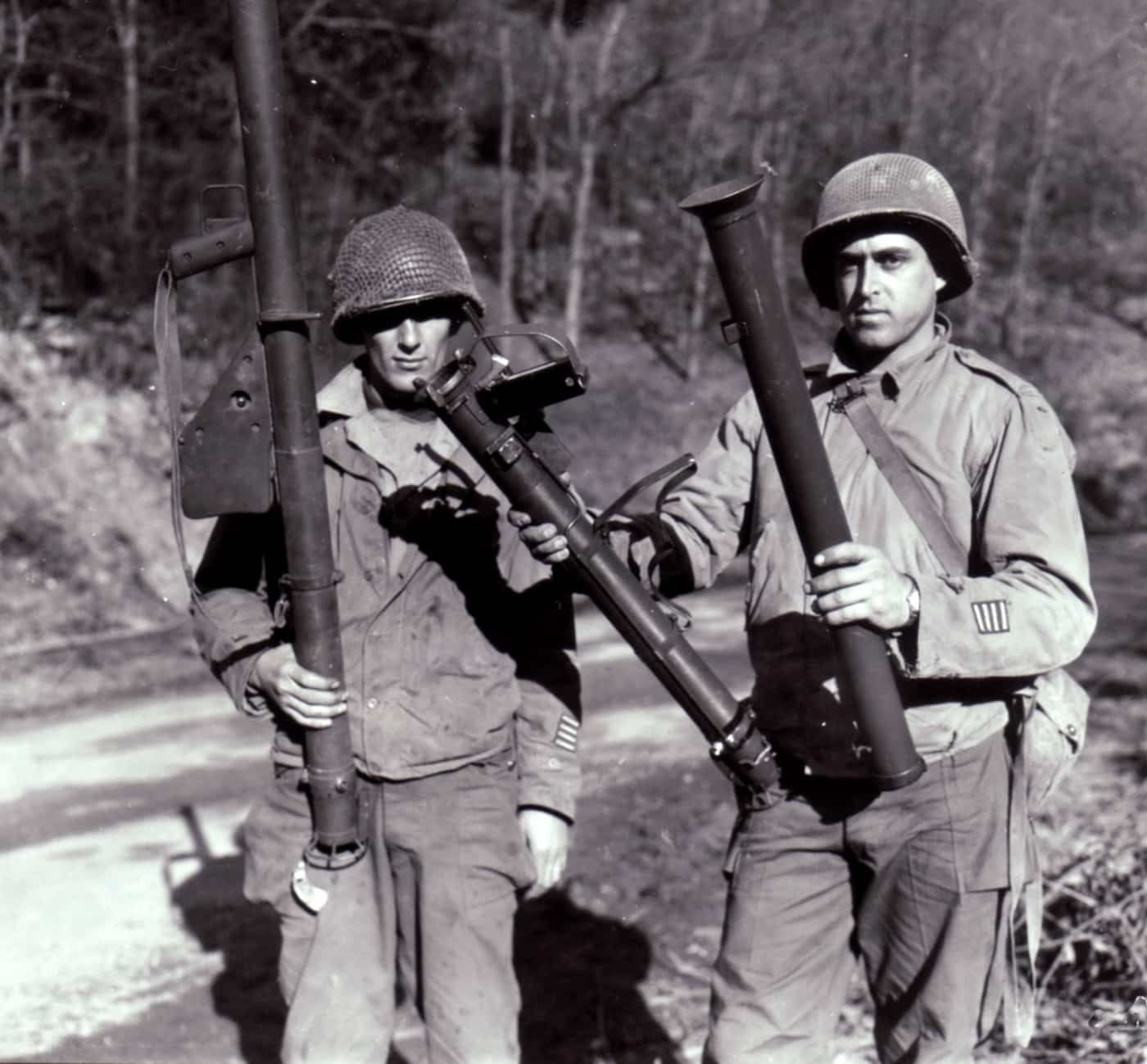
At times it seemed as though the Bazooka was as dangerous to its users as it was to the enemy. The M1A1 manual advises:
Since the fuse of the rocket is quite sensitive, it is important that the rocket be handled carefully after removal of the safety pin, and that it is not dropped. A fall on the nose after the removal of the safety wire will cause detonation.
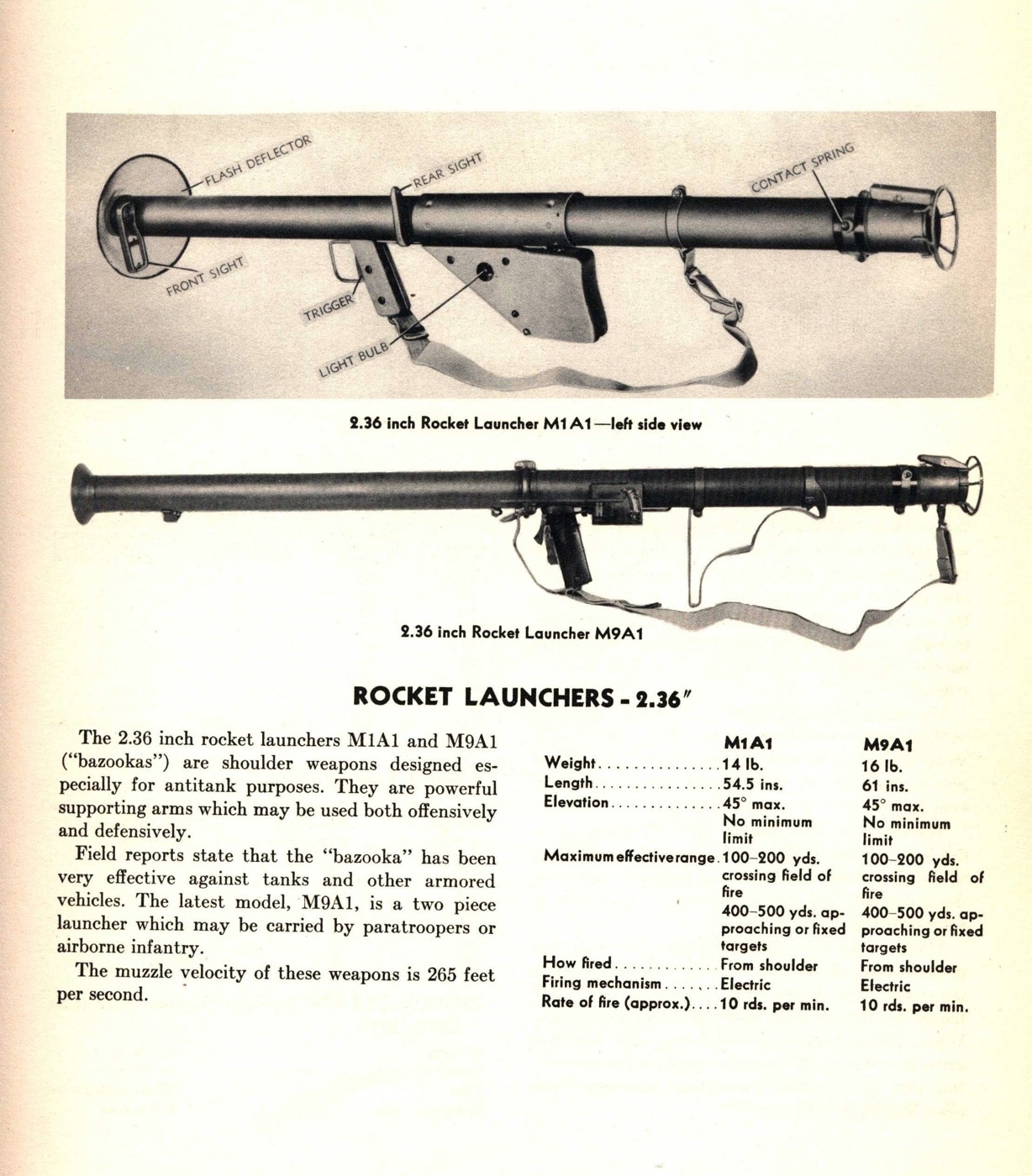
The burning time of the propellant is approximately .02 to .03 seconds, and combustion is complete before the rocket leaves the muzzle, hence there is no flash. Occasionally for some reason, the burning may be retarded, creating a back-flash as the rocket leaves the muzzle. This occurs during cold weather but may also occur at other times. The firer should be protected against this by gloves or cloth wrapped around the hands, goggles, or other protective equipment such as a gas mask. This protection is important in cold climates or when no flash deflector is available. It is also recommended that both the firer and loader wear steel helmets when using the launcher.
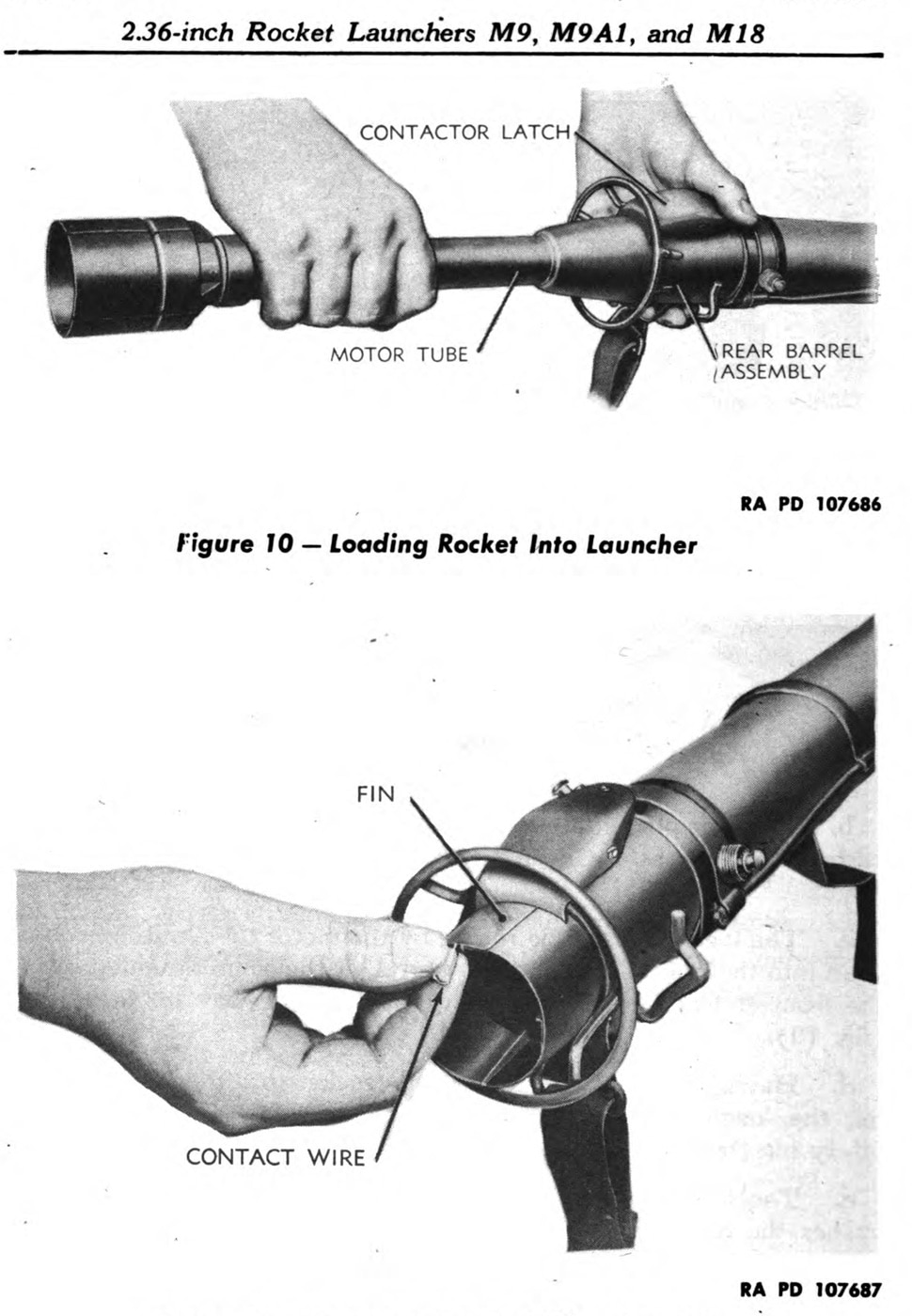
In using the launcher it is essential that no personnel or inflammable material be behind the launcher within a distance of twenty feet. Never stand in or near the rear of the launcher while it is being fired because the hot gases can inflict serious burns. When firing from trenches or foxholes, clearance should be provided so the back-blast is not deflected against personnel.
Desperate Measures
Firing from inside a house or bunker was a risky business, but in the Battle of the Bulge it was frequently quite necessary. Advanced training with the Bazooka made a critical difference. Few of the new G.I.s had any experience with the weapon, nor did they understand the realities of using it. Some simple instructions in the best areas of an enemy tank to target, and the realistic range to engage the Panzer — these paid big dividends in combat. Care and maintenance of the launcher, and particularly the rather finicky rockets was also very important.
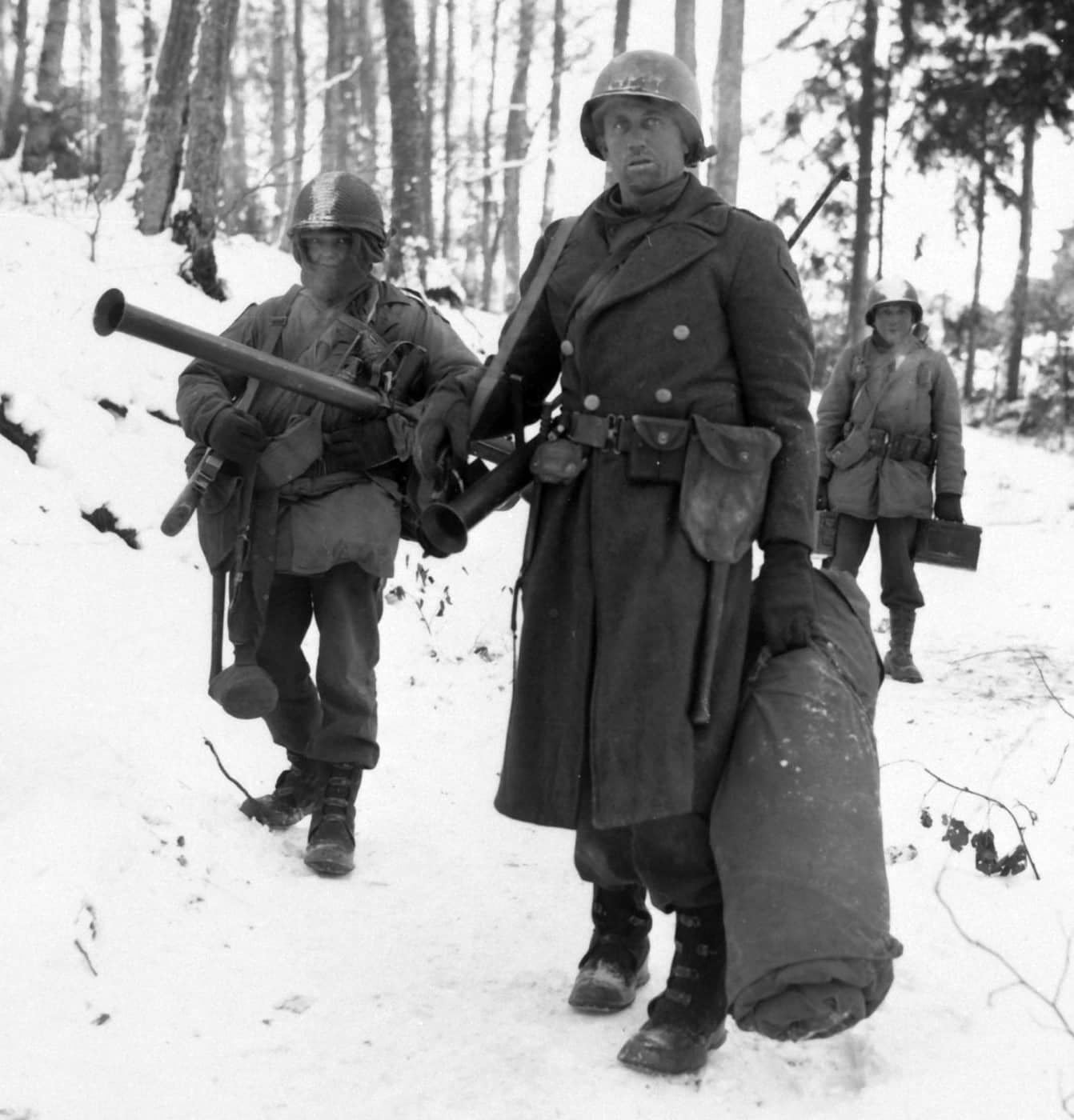
Units that had practiced with their Bazookas and had developed some rudimentary tactics had much more confidence with the weapon, and consequently their anti-tank performance was better during the Battle of the Bulge and beyond. It is also important to remember that U.S. infantry units were also still relying on the 57mm towed anti-tank gun. This was a cumbersome weapon of middling performance, and by the end of 1944 its effectiveness against German armored vehicles was questionable, except at very close range. After the Battle of Bulge, the 57mm guns quickly began to disappear.
Approximately half of the Bazookas available during the Battle of the Bulge were the new M9A1 variant, introduced in the late summer of 1944. The Catalog of Standard Ordnance, 1944 edition, describes the M9A1:
The dry cells which supplied the ignition spark in the earlier models have been replaced by a self-contained magneto operated by pressure on the “squeezer” type trigger. A one-way safety switch incorporated in the trigger mechanism cuts out the magneto and prevents generation of an electrical impulse as the trigger returns to position. The sight is an optical ring hinged to fold against the tube when not in use and protected by a cover. An adjustable range scale provides graduations from 50 to 700 yards in 50-yard increments. Assembled and ready for firing, the rocket launcher measures 55 inches overall and weighs approximately 14 ½ pounds.
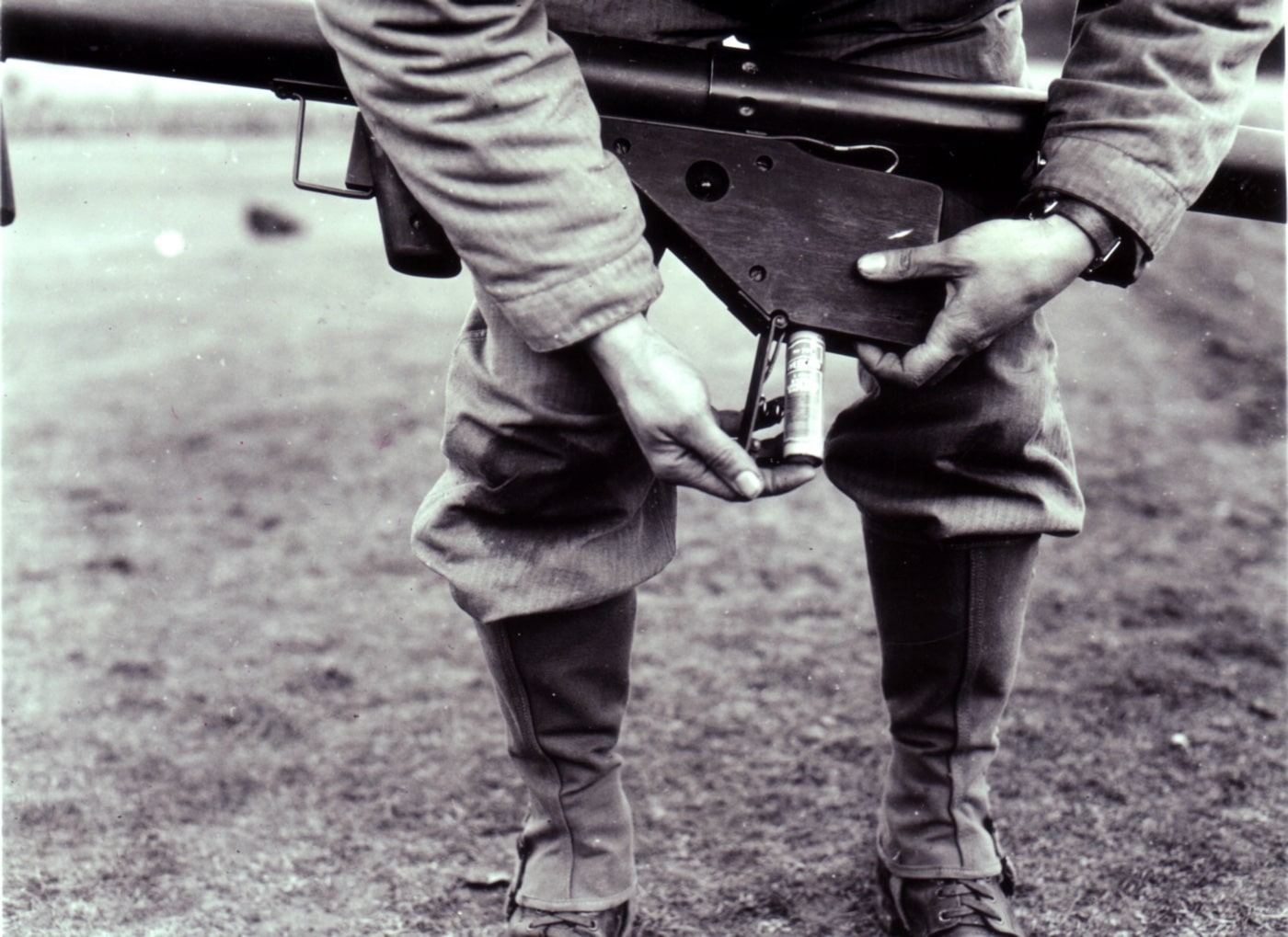
Ultimately, there were no guarantees, but the universal ingredient for success with the Bazooka during the desperate fighting in the Battle of the Bulge was a plentiful helping of G.I. courage: the courage it took to stalk a German heavy tank to get a kill shot on the vulnerable side or rear armor — or the courage to hold their fire until the Panzers nearly rolled over the top of their position.
Big Cats in the Ardennes
For most G.I.s, every German tank was a Tiger. And while the Panzerkampfwagen was normally a rarity on the battlefield, the Ardennes offensive featured an abnormally large contingent of the massive 75-ton Tiger Ausf B (the Tiger II or “King Tiger”) tanks, carrying the devastating 88mm gun. Armor protection on the front of the Tiger II was incredibly thick, with 150mm of armor on the upper hull front, and 180mm on the turret front. Even the sides of the King Tiger were thick at 80mm. Consequently, it was almost impossible for a Bazooka to achieve a kill shot on a King Tiger, but G.I.s still fought them with everything they had.
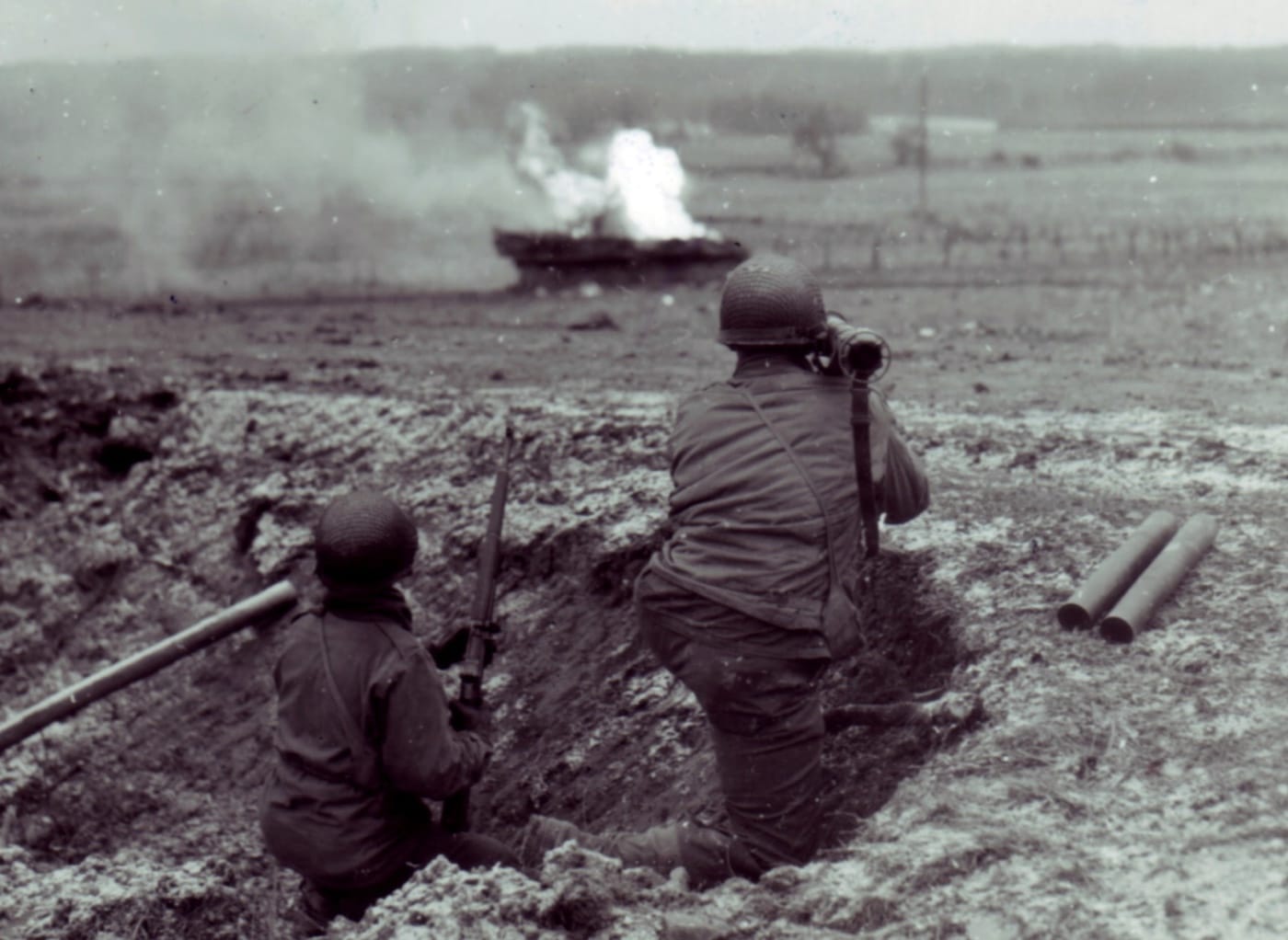
By late 1944, the Panzer MKV “Panther” had become the most common of the German main battle tanks. The Germans considered the 50-ton Panther to be a medium tank, while the Allies considered it a “heavy”. Regardless, the Panther was arguably the best overall tank of the entire war. It had 80mm frontal armor sloped at 55 degrees, and the turret’s 75mm main gun mantlet sported 100mm of armored protection. To save weight, the Panther’s sides only carried 50mm (maximum) armor. Consequently, Panther sides were vulnerable to Bazookas and U.S. anti-tank guns.
Also present in the Bulge fighting was the older Panzer MKIV, still a capable battle tank but one that was at the end of a long combat career that dated to the invasion of Poland. Maximum armor protection on the Panzer IV was 80mm, and the sides only featured 30mm. One of the protective features of the Panzer IV were the 5-8mm armored skirts (“Schurzen”) for the hull and turret sides. The Western Allies assumed these to be “anti-bazooka” shields, but the skirts were only intended for protection against Soviet 14.5mm anti-tank rifles, that were in widespread use on the Eastern Front. It was learned during post-war test that the side skirts actually enhanced the effectiveness of hollow charge rounds by detonating them at an optimal distance from the main armor plate, thus allowing the penetrating flame jet to fully develop.
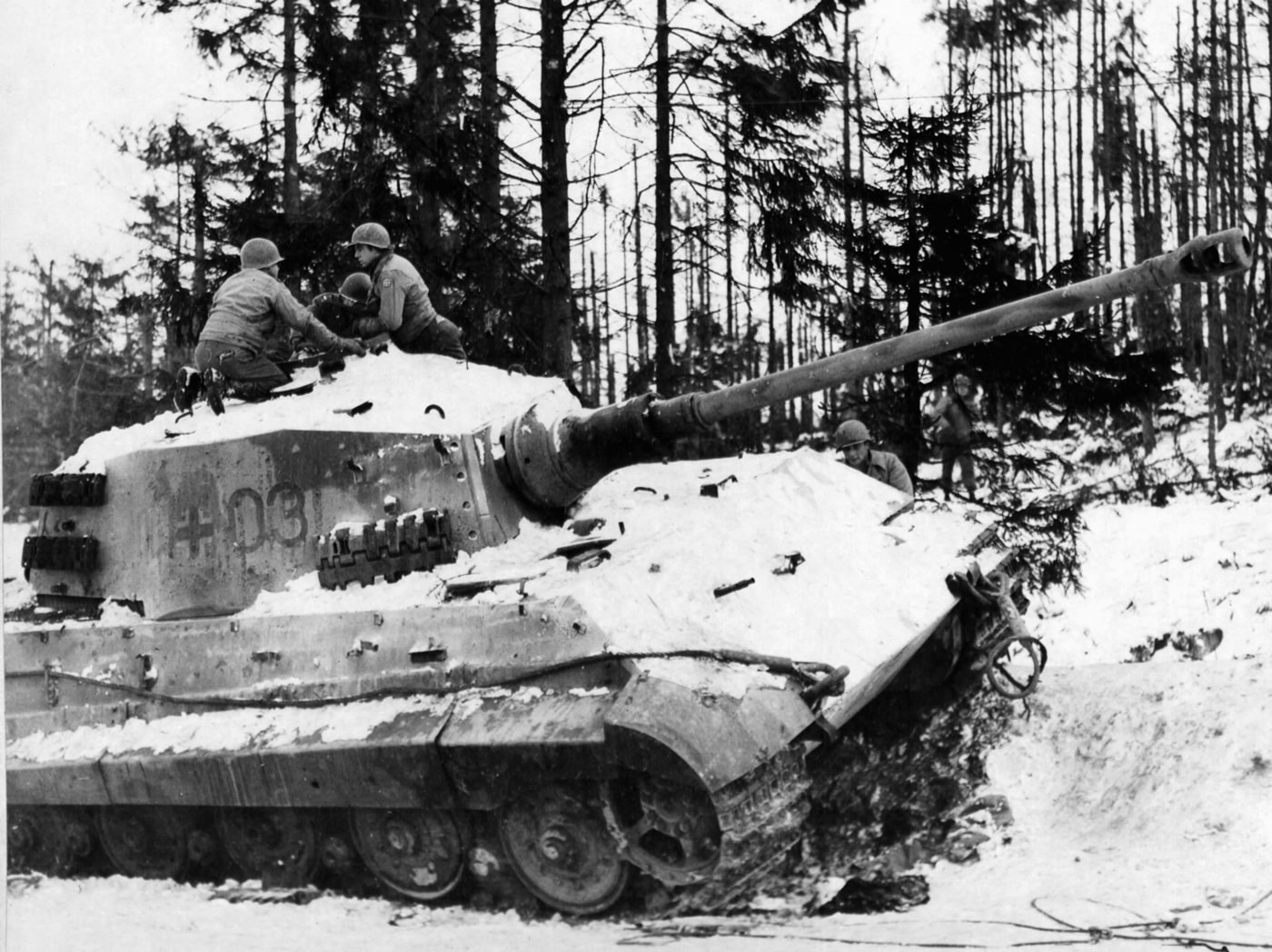
The last group of German armored vehicles common on the Bulge battlefields was the turretless tank destroyers (Jagdpanzer) and assault guns (Sturmgeschutz) based on the Panzer III and IV chassis. These vehicles carried a heavy gun, usually 75mm, mounted with very limited traverse in an armored casemate. Frontal armor ranged up to 80mm, but the sides were vulnerable with less than 50mm of protection. These armored assault vehicles were much more limited than tanks, but by 1944 Germany’s lack of resources demanded more cost-effective options — consequently more and more assault guns appeared in the ranks of the Panzer divisions.
Fighting with Any Means Possible
In close combat, the desperate infantrymen turned to anything they could think of. Some success was found in flinging a five-gallon gas can onto the engine deck of a German tank and igniting it with a thermite grenade. A couple of G.I.s were seen attempting to set a tank on fire with armloads of burning straw. Crowbars, pipes, and logs were thrust in German tracks, bogies and running gear, hoping for, at least, a “mobility kill”. A tank that cannot move quickly becomes an iron coffin.
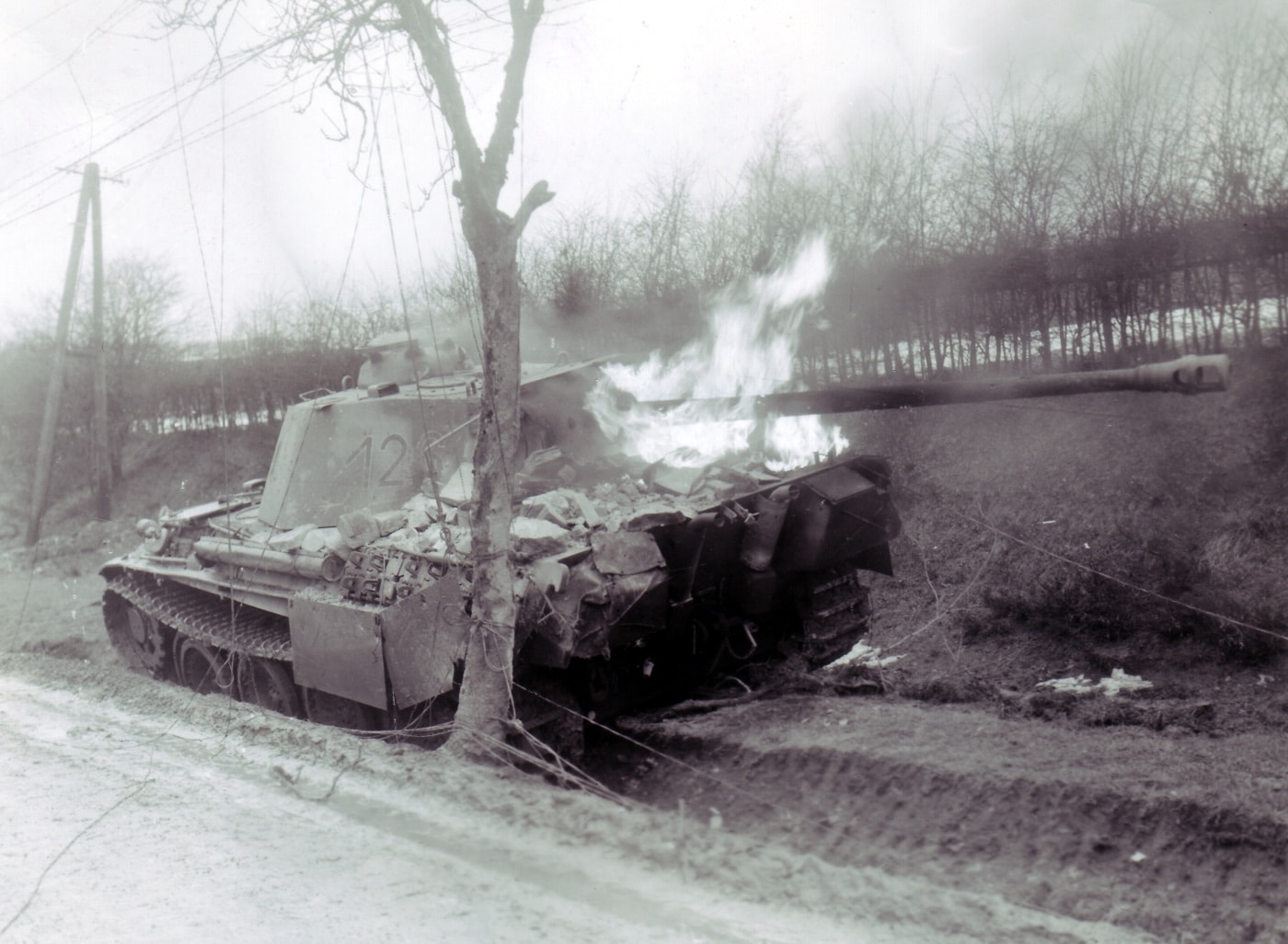
When tanks operate in urban or wooded areas, the opposing infantry suddenly has many advantages. In the Battle of the Bulge, the Germans seem to have forgotten, or were often unable to practice the hard lessons they had learned in combat in Russia — that tanks must be supported by infantry when attacking built-up or forested areas. Without infantry to protect them from G.I. tank-hunter teams, Panzers were often in grave danger from firebombs, Bazookas and U.S. troops willing to do whatever it took to win.
Ultimately, the greatest anti-tank weapon available to the infantry is their courage. In the Battle of the Bulge, American courage led to the triumph of man over machine.
Editor’s Note: Please be sure to check out The Armory Life Forum, where you can comment about our daily articles, as well as just talk guns and gear. Click the “Go To Forum Thread” link below to jump in!
Join the Discussion
Continue Reading
Did you enjoy this article?

 589
589






